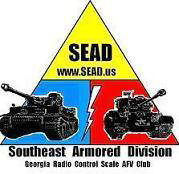
General KV-I history and performance:
The KV-1 was well armored and well armed for its time. Widely considered the Russians version of the German Tiger I before the Tiger was introduced. The KV-I was in widespread service when the T-34 was relatively scarce and still in the developmental stage. With the introduction of the T-34, the KV-I was comparably slow and more difficult to maneuver. The KV-I series was used until 1943 and ultimately replaced by the IS series tanks
Finding a comparable AFV to the KV-I introduced in 1940 is difficult as no other tank anywhere in the world had the KV-I’s combination of armor and firepower. To compare the KV-I to German armor, when the initial German invasion took place in 1941, the Germans did not have a tank, mobile gun or anti-tank gun capable of penetrating the KV-I from either the front or the sides. Only the DP 88 could penetrate the KV-I. The Germans had the Pzkw-III and IV, both of which were less well armed and had less armor protection. The KV-I 76.2mm high velocity gun was capable of destroying any of the German tanks at the time at all normal battle ranges. Given equal crew skill between Russian and German tank crews, any German tank at the time was easy prey for a KV-I. Of course, crew skill was generally not equal. There are recorded accounts during the initial invasion where a single KV halted the advance of an entire panzer division.
Comparing the KV-I to other Russian tanks of its time, standard Russian tanks used 47mm guns (like the BT-7 and T-26) or utilized low velocity howitzers (like the T-28). As greater numbers of T-34 tanks came into service, the usefulness of the KV-I declined. The T-34 used the same engine, same gun, but had faster speed, less weight and better-sloped armor than the KV-I.
The closest Allied comparison to the KV-I in terms of armor protection was the British Matilda II or French Char B, which were comparable, but firepower of the Matilda II and Char B were by far inferior to the KV-I.
The Americans had nothing comparable to the KV-I, as production of the M-2 medium tank had just begun production at the time, which had no more combat power than a T-26.
The KV-I had some drawbacks as well. Reliability was problematic, with the KV-I having the same engine as the T34, but being 18 tons heavier. The state of Russian tank crew training left much to be desired as well, so the KV-I never had the opportunity to demonstrate its true potential. The KV-I drive train was weak compared to the T-34, with a poor transmission, and was also poor ergonomically. By design, the turret ring of the KV-I limited the potential for upgrading turret and gun capacity. This inherent design setback spurred the improved design of the IS series, which ultimately replaced the entire KV series even though many aspects of the KV and IS tanks were similar.
Of the innovations possessed by the KV-I, the hull and turret were all welded or cast, which was unusual in 1940, and had torsion-bar suspension, which was also rare at that time. The Soviet 76.2mm could KO any other tank while also having good HE capability. Unlike British tanks, the KV-I had the means to take on both tanks and towed AT guns and unlike German tanks, the KV-I could penetrate any opponent at long range.
According to Steve Zaloga, as noted in his books, concerning the period of KV-I usage in 1941, the KV-I performed so well in terms of armor and firepower that it's significant weaknesses were effectively masked. For example, the KV-I could withstand multiple hits from most German weapons, even at relatively short ranges. However, the Germans recognized this and by 1942, significant numbers of long 50mm and 75mm guns were deployed causing the KV-I to become vulnerable. At that point it became a much less effective tank, and it was harder to ignore the weaknesses. KV production ceased in 1943 with only about 500 being made that year in favor of the new IS series.
The model:
I had the opportunity to acquire this unique model from Phil Edwards from the
The industrial resin hull and turret is quite sturdy approaching ¼ inch thickness. The hull interior is spacious enough for addition of motors and electronics. Metal threaded bolts have been incorporated in the hull casting for torsion bar installation to the suspension arms similar to the Tamiya Leopard 2A6 set up. The suspension arms are moveable with suspension stop blocks and the roadwheels, idler and sprocket rotate freely, although these resin parts would need upgrading to ABS or metal for proper RC use. The turret is rotational and removable. The hatches are molded closed. The turret ring is continuous and prepared for a ring gear. There is sufficient room in the turret to accommodate a recoil and elevation unit. The main gun barrel is metal and seats in an elevating mantlet with elevation and depression stops accurate to the actual KV-I gun elevation and depression angles.
The model represents a KV-I E variant from an unknown unit operating in the summer of 1942. Several well-known pictures of this particular vehicle exist depicting field-testing for Russian propaganda. The detail of the model KV-I is fabulous with interesting details such as a partial engine under the engine hatch, metal exhaust grills, rivets and bolts for the appliqué armor, intricate weld seams and even wire for the headlamp. The KV-I is lightly weathered and painted Russian green. The tracks are individually cast and linked by two endpins complete with a bolt and nut look. The tracks would need recasting into more durable plastic or preferred metal for the rigors of RC running.
See the results in the KVI build page.
.
.

SEAD
Southeast Armored Division
KVI-e History
Home War Games Armory Battleday Report Tech Notes Links Email Contact
